Medical Disclaimer: The information in this blog is for enlightening and educational purposes only and is not intended as medical advice. The content in this post is not meant to substitute for a professional medical diagnosis, advice, or treatment. Always ask advice from your physician or other qualified health providers with any questions you may have regarding a medical condition.
Getting a total hip replacement surgery [1] is a big decision—one that can restore mobility, ease pain, and give you back the freedom to move. But if you’re considering surgery (or already have a date set), one question is probably on your mind:
“How long until I feel normal again?”
The truth is, recovery isn’t one-size-fits-all. Many guides will tell you it takes 6 to 12 weeks to resume daily activities, but the reality?
Your recovery speed depends on what you do—not just how much time passes.
Some people bounce back faster by following a structured rehab plan, staying active (but not overdoing it), and fueling their bodies for healing.
Others struggle with setbacks because they push too hard, neglect physical therapy, or underestimate how much nutrition, movement, and mindset matter.
So, what does hip replacement surgery recovery time actually look like—and more importantly, how can you speed it up while staying safe?
Let’s break it all down.
Here’s What to Expect Week by Week After The Surgery

Every person heals at their own pace, but understanding a general week-by-week timeline can help set realistic expectations.
Below is a breakdown of what you might experience at each stage of recovery and what you can do to stay on track.
Week 1-2: The Critical Foundation Phase
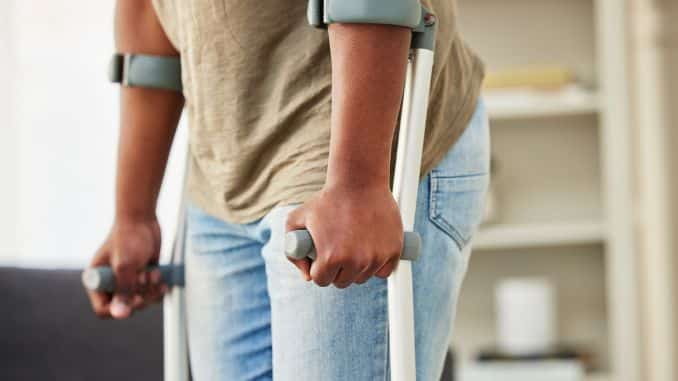
This is when your body is doing the most intense healing. Swelling, bruising, and stiffness are normal, but proper hip pain management and movement are key to preventing complications.
What to Expect:
- Pain and swelling will be at their peak but should gradually improve.
- Walking with a walker, crutches, or a cane (most people start weight-bearing with assistance).
- Essential daily activities like using the bathroom, standing for short periods, and getting in and out of bed will still feel challenging.
- You’ll have staples or sutures, which need to be kept clean and dry.
What to Do:
- Use ice packs, elevation, and prescribed pain meds to control swelling and discomfort.
- Move every few hours to prevent stiffness and blood clots [2]—your doctor may recommend gentle ankle pumps and leg lifts while in bed.
- Start physical therapy (PT) [3] within the first few days—your therapist will guide you on safe movements.
- Follow precautions (no bending past 90 degrees, no twisting, and no crossing your legs).
Week 3-6: Regaining Mobility & Strength

By now, you’ll start noticing real progress. Swelling and pain should be decreasing, and you’ll feel more independent with movement.
What to Expect:
- Walking longer distances with a cane or no assistance by the end of this phase.
- Moving around the house more freely—standing while preparing meals, light cleaning, etc.
- Reduced pain, though stiffness may still be present, especially in the morning or after sitting.
- Beginning structured PT exercises to improve strength and flexibility.
What to Do:
- Increase your walking distance gradually—aim for a few extra steps each day.
- Focus on balance and stability exercises (like standing leg lifts, heel raises, and gentle squats).
- Continue following hip precautions if your doctor recommends them.
- Hydration, a protein-rich diet, and anti-inflammatory foods can help support muscle repair.
- Be mindful of your surgical procedure—most stitches are removed by week 4-6, so proper aftercare is essential.
Week 7-12: Moving with Confidence & Returning to Normal Life
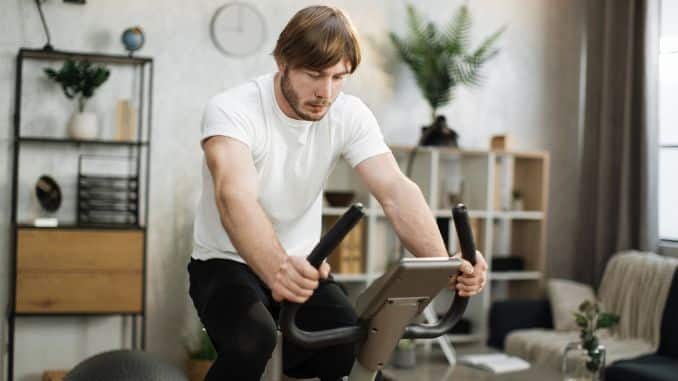
At this stage, most people start feeling like themselves again. You may still have some stiffness or discomfort, but your overall strength and mobility should be improving.
What to Expect:
- Walking longer distances without assistance and handling stairs more easily.
- You may be able to return to work, depending on the job.
- Resuming light workouts like stationary cycling, water exercises, and stretching.
- Improved balance, coordination, and overall endurance.
What to Do:
- If cleared by your doctor, start low-impact exercises (swimming, stationary biking, resistance bands).
- Continue strength-building exercises like hip bridges, gentle squats, and side leg raises.
- If you still feel weakness or instability, consider assisted training sessions with a PT.
- Avoid high-impact activities (running, jumping) until you get full clearance.
Month 3-12: Full Recovery & Long-Term Strength

By now, most people feel almost fully recovered—but that doesn’t mean the healing process is over. Your scar tissue, flexibility, and strength will continue improving for up to a year or more.
What to Expect:
- Scar tissue softens, improving range of motion.
- Increased confidence in walking, bending, and daily activities.
- Some may return to light sports around the 4-6 month mark.
- Older adults and people with existing joint issues may need additional strength training.
What to Do:
- Keep up with strength and flexibility exercises to protect your new hip.
- Gradually reintroduce higher-impact activities (if approved by your doctor).
- If pain or stiffness persists, discuss adjustments with your PT or surgeon.
Key Factors That Can Speed Up (or Slow Down) Your Recovery
1. Physical Therapy

Physical therapy is one of the most important factors for a partial or total hip replacement surgery recovery time.
It’s not just about getting stronger—it’s about retraining your body to move properly while avoiding stiffness and weakness.
The sooner you start with guided exercises, the better your mobility and flexibility will be in the long run.
Early movement also reduces the risk of complications like blood clots and excessive scar tissue buildup.
Skipping therapy or doing exercises incorrectly can lead to setbacks, prolonging recovery and making it harder to regain full function.
While it may feel uncomfortable at first, consistency in physical therapy is key to a smooth recovery.
Dr. Tim, a physical therapist, emphasizes the importance of formal physical therapy following a total hip replacement. He notes that while some surgeons may not prescribe physical therapy unless patients exhibit significant difficulties, he strongly believes that every patient should undergo a physical therapy evaluation to optimize postoperative outcomes. Dr. Tim recommends beginning gentle exercises, such as quad sets and heel slides, immediately after surgery, with most other exercises and formal therapy sessions starting one week postoperatively. He also highlights that recovery differs for individuals, though this can vary based on factors like the duration of pre-surgery symptoms and the patient’s motivation.
2. Diet & Nutrition

Your body needs the right nutrients to rebuild muscle, strengthen bones, and reduce inflammation after surgery.
Protein is essential for tissue repair, while calcium and vitamin D support bone health.
Anti-inflammatory foods like leafy greens, berries, and fatty fish can help minimize swelling and promote better healing.
Staying hydrated is equally important, as dehydration can lead to muscle cramping and joint stiffness.
It should be noted that processed foods high in sugar and unhealthy fats can increase inflammation, slowing down the recovery process.
A well-balanced diet ensures your body has the fuel it needs to heal efficiently.
3. Daily Movement
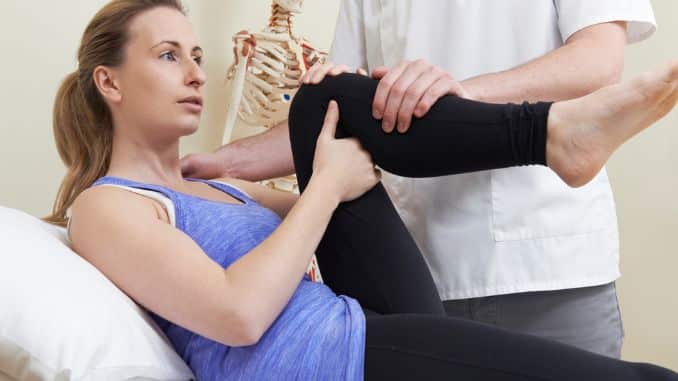
While rest is necessary, too much of it can actually delay recovery. Movement is essential to keep the new hip joint flexible and to prevent muscle atrophy, making it a crucial part of hip replacement surgery recovery time.
Even small activities like walking around the house or performing seated leg lifts help improve circulation, reduce stiffness, and speed up healing.
Patients who avoid movement due to fear of pain often find themselves struggling with mobility issues later.
However, it’s equally important not to overdo it—pushing too hard too soon can cause swelling, pain, and even joint strain.
The key is to stay active in a controlled, gradual manner while listening to your body’s signals.
4. Avoiding Setbacks

One of the biggest challenges in recovery is knowing how much to push yourself without causing harm.
Some patients return to their normal activities too quickly, leading to pain and potential complications, while others are overly cautious and don’t move enough, which can slow progress and extend hip replacement surgery recovery time..
It’s important to find a balance between activity and rest.
Swelling, fatigue, and mild discomfort are normal, but sharp pain or excessive soreness is a sign that you need to scale back.
Following the physical therapist’s guidelines ensures you’re progressing at the right pace without unnecessary risks.
By staying mindful of your body’s signals and maintaining a steady recovery plan, you can regain strength and mobility safely and effectively.
5 Simple Exercises for Hip Replacement Recovery to Improve Strength and Mobility
1. Ankle Pumps
Purpose: Improves circulation and prevents blood clots.
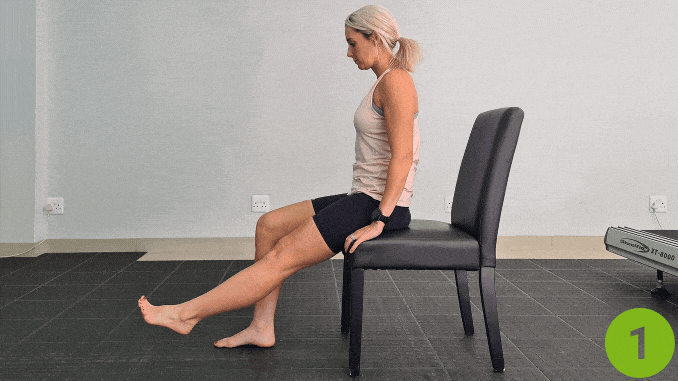
- Begin in an upright sitting position on the edge of the chair with your knees bent and feet flat on the floor.
- Maintain good alignment with your head, shoulders, and hips.
- Then, place your hands on your side. Engage your core muscles.
- Lift one leg and slowly flex and point your toes up and down with 10 repetitions.
- Moreover, relax and repeat the movement on the opposite leg.
2. Quadriceps Sets (Static Quad Contractions)
Purpose: Strengthens the thigh muscles (quadriceps) to support the hip.

For this exercise, use a pillow for support.
- Begin in an upright sitting position on the floor with your legs extended.
- Then, place a pillow under your knees for support.
- Maintain good alignment with your head, shoulders, and hips.
- Place your hands on the side.
- Tighten your thigh muscles by pressing the back of your knee down toward the pillow.
- Hold the position for 5 seconds.
- Moreover, relax and repeat the movement.
3. Heel Slides
Purpose: Improves knee and hip flexibility.

- Lie on your back on the floor with your legs straight.
- Maintain good alignment with your head, shoulders, hips, and toes.
- Tighten your abdominal muscles.
- Slide one foot toward your seat while keeping your heel on the surface.
- Stop if you feel any pain and return to the starting position.
- Repeat the movement with 10 repetitions on each leg.
4. Standing Hip Abduction (Side Leg Lifts)
Purpose: Strengthens the hip muscles and improves balance.
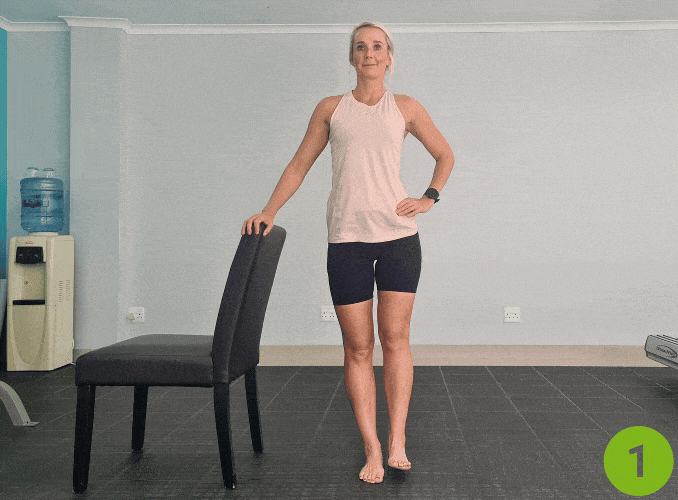
For this exercise, you may utilize a chair, a counter, or a wall to support your balance.
- Begin in an upright standing position beside a chair with your feet hip-width apart, maintaining good alignment with your head, shoulders, hips, and legs.
- Then, place one hand at the back of the chair for support and the other on your hip. Engage your core muscles.
- Lift one leg sideways (away from your body) without bending your knee with 10 repetitions.
- Moreover, relax and repeat the movement on the opposite side.
5. Seated Marching
Purpose: Improves hip mobility and strengthens hip flexors.
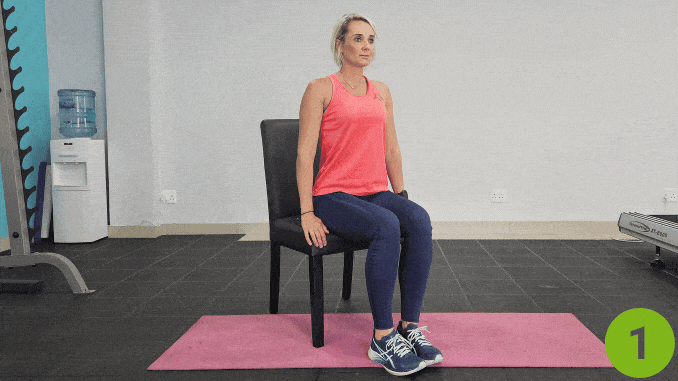
- Begin in an upright sitting position on a chair with your knees bent and feet flat on the floor.
- Maintain good alignment with your head, shoulders, and hips.
- Place your hands on your side. Engage your core muscles.
- Lift one knee toward your chest, then lower it.
- Alternate legs in a marching motion.
- Repeat the movement with 15 repetitions.
These exercises are gentle and effective for early recovery after hip replacement surgery. However, always consult your surgeon or physical therapist before starting.
Final Word
Recovering from total or partial hip replacement surgery is a journey, but with the right approach, you can get back to doing what you love—stronger and more mobile than before.
While the healing timeline varies from person to person, staying consistent with physical therapy, prioritizing proper nutrition, and maintaining an active but balanced routine will significantly impact your hip replacement surgery recovery time.
According to Dr. Savya Thakkar, MD, patients who follow a structured rehabilitation plan, including controlled movement and therapy, experience better mobility and fewer complications. He emphasizes that adhering to post-surgery guidelines is essential for long-term success.
Patience is key. Some days will feel better than others, and occasional setbacks are normal.
What matters most is listening to your body, following your doctor’s recommendations, and gradually rebuilding your strength and confidence.
By taking the right steps each day—moving safely, fueling your body, and avoiding common pitfalls—you’ll not only recover faster but also ensure that your new hip remains strong and functional for years to come.
Stay committed, trust the process, and soon enough, you’ll be moving with ease and enjoying life pain-free.
For help eliminating hip pain and tightness, check out Unlock Your Hip Flexors, here!
FAQ’s
How long does it take to fully recover from hip replacement surgery?
Most people regain basic mobility within 6-12 weeks, but full recovery can take up to a year. While you may feel significantly better within a few months, strength, flexibility, and overall endurance continue improving over time. Factors like age, overall health, and physical therapy commitment can influence how quickly you heal.
When can I start walking after hip replacement surgery?
Patients typically start walking with assistance (walker or crutches) within 24-48 hours after surgery. By week 3-6, many can walk longer distances with minimal support. Most people transition to independent walking around week 6-12, but it depends on individual progress and physical therapy consistency.
What activities should I avoid after hip replacement?
For the first 6-12 weeks, avoid bending past 90 degrees, twisting your hip, crossing your legs, and sitting in low chairs. High-impact activities like running, jumping, and heavy lifting should also be avoided until cleared by your doctor. Always follow your surgeon’s guidelines to prevent dislocation or strain on the new joint.
When can I drive again after hip replacement surgery?
Most people can resume driving 4-6 weeks after the joint replacement surgery, provided they have good control over their operated leg and are off strong pain medications. If surgery was on your right leg, it may take longer since braking and acceleration require full strength and coordination. Always consult your doctor before getting behind the wheel.
How can I speed up my hip replacement recovery?
The best ways to accelerate recovery include consistent physical therapy, proper nutrition (high in protein and anti-inflammatory foods), staying hydrated, walking regularly, and avoiding excessive sitting or inactivity. Following post-surgery precautions and listening to your body’s signals will also help prevent setbacks and ensure a smooth healing process.


